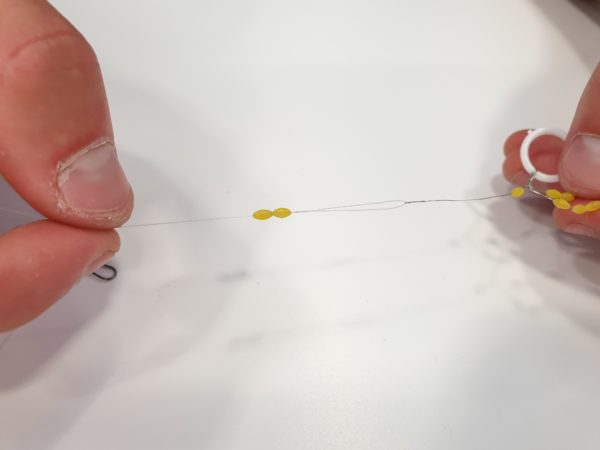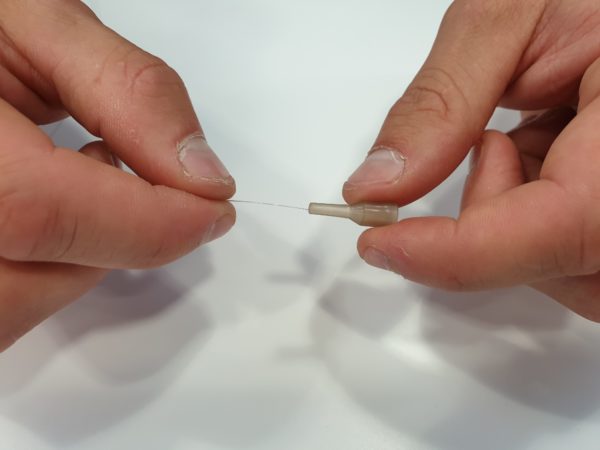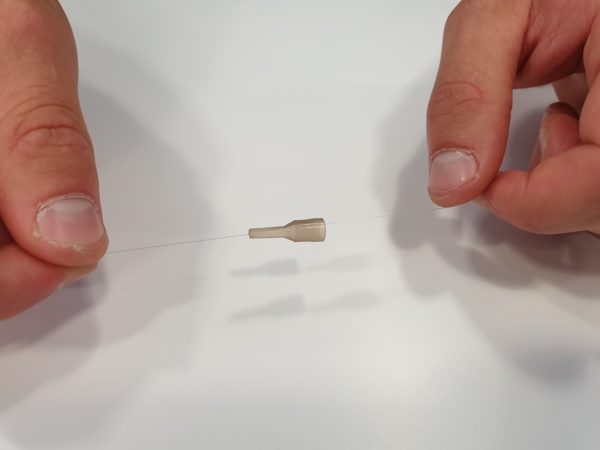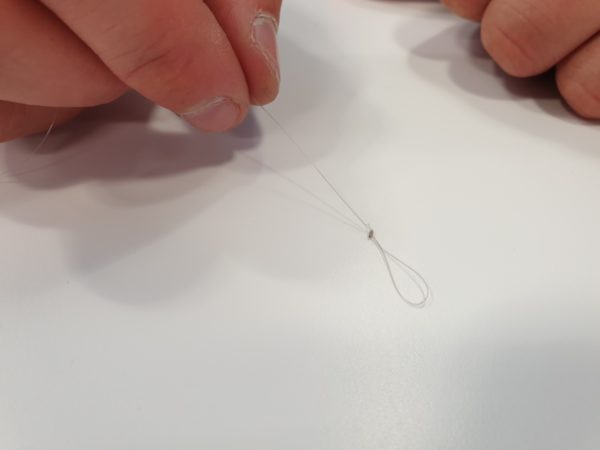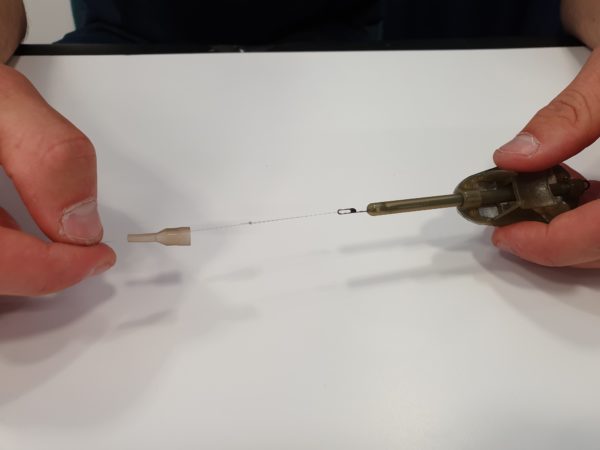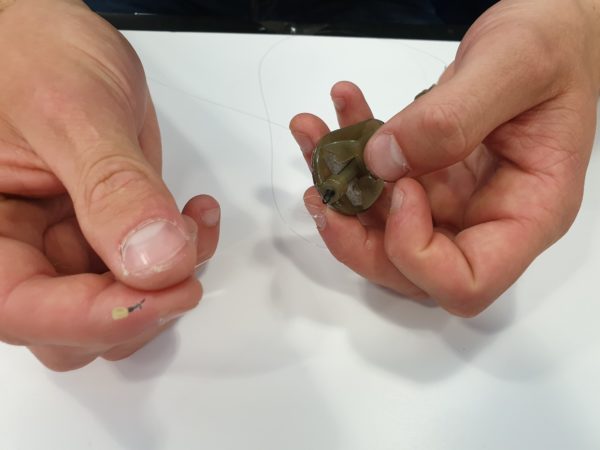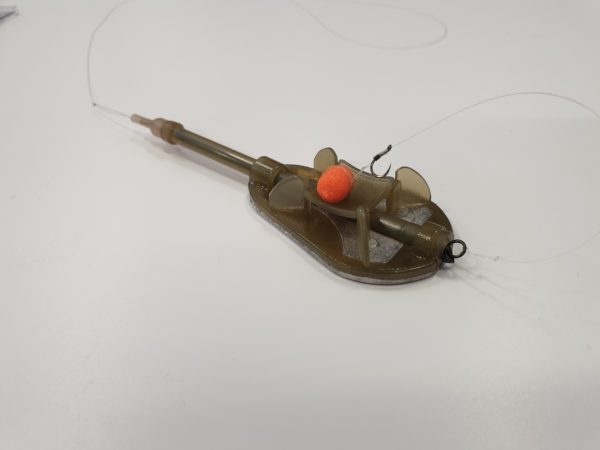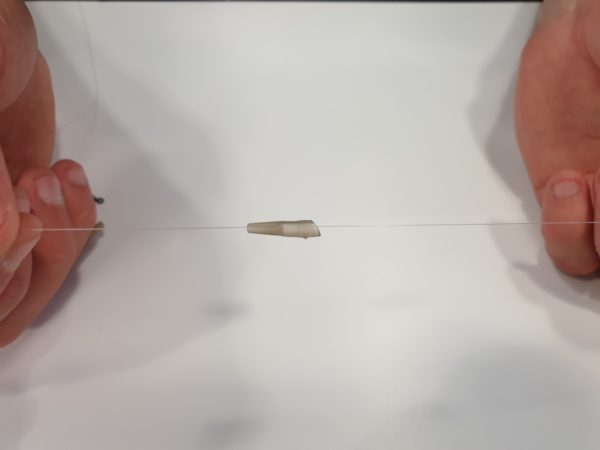Scotland’s commercial coarse fishing scene is on the up and with some well established coarse fisheries around the country, these hidden gems hold various coarse species that can be targeted using an array or rigs and tactics. In this article, we will be exploring the tackle you require to target various coarse species including F1, carp, roach, tench, bream etc and explain what coarse fishing rigs to use and how to utilise them.
What do I need for coarse fishing?
Coarse fishing rod
So what do you actually need for coarse fishing? Well, depending on the rigs and techniques you are going to be implementing, we recommend two styles of rods. A 10 – 11′ Feeder rod/Quiver tip with a 2oz – 3oz tip for ledgering tactics, this can be used for bomb ledger and various feeder tactics and a 10-11′ float rod.

A rod with a progressive action is recommended as it will provide the necessary cushion when playing larger carp and will eliminate any unwanted hook pulls. The progressive action also provides a safety cushion when using lighter breaking strain hook lengths.
In regards to the best coarse fishing reel for you, a 2500 size fixed spool reel is perfect for the job. The smaller reel provides ample line capacity, while still providing the ability to feather and control the line during the cast.
What line do I need for coarse fishing?
We recommend 6-8lb monofilament, this breaking strain of line is ideal for dealing with larger carp if they’re present in the fishery. Ensure you look for a reliable and robust mainline as you will be making in excess of 100 plus casts in a session.
How do you use a plastic hook disgorger?
A disgorger is a long plastic or metal cylindrical tool that has a special hook holding mechanism at the end of it. The unique design of a disgorger allows you to remove barbless hooks that may have been taken deeper in the fishes mouth and is not accessible with ones fingers.
The disgorgers hook removing mechanism contains a groove that is used for slipping the end of the line into and sliding down the line to the end of the hook. The tapered cone head of the disgorger fits over the hook, once this is done. A quick but gentle push is then needed to remove the hook. With the line under tension, the hook will tighten against the tapered cone head of the disgorger and the hook can be removed easily.
Bank stick and Quiver rest
When coarse fishing, only 1 bank stick is really required. As the takes come quick and fast it’s important to be with the rod at all time. The usual set up will see the butt end of the rod sitting on your need or the edge of your chair. The quiver rest offers a slightly larger footprint than a standard rod rest, this is to help obtain a better angle for your rod tip to sit at during alternating weather conditions.
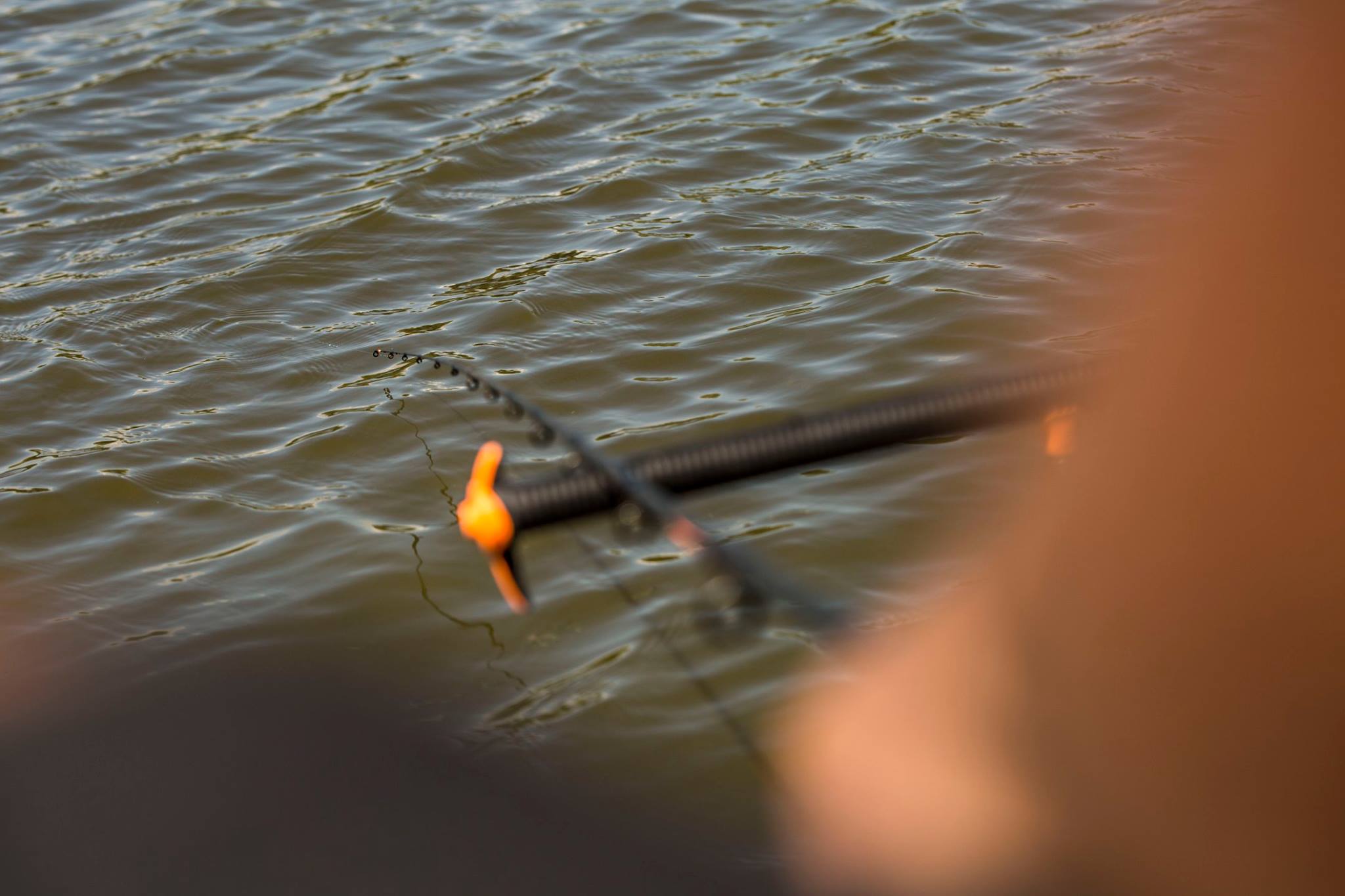
Fishing Catapult
A bait catapult is a very important tool, it allows us to feed the swim quickly and accurately.
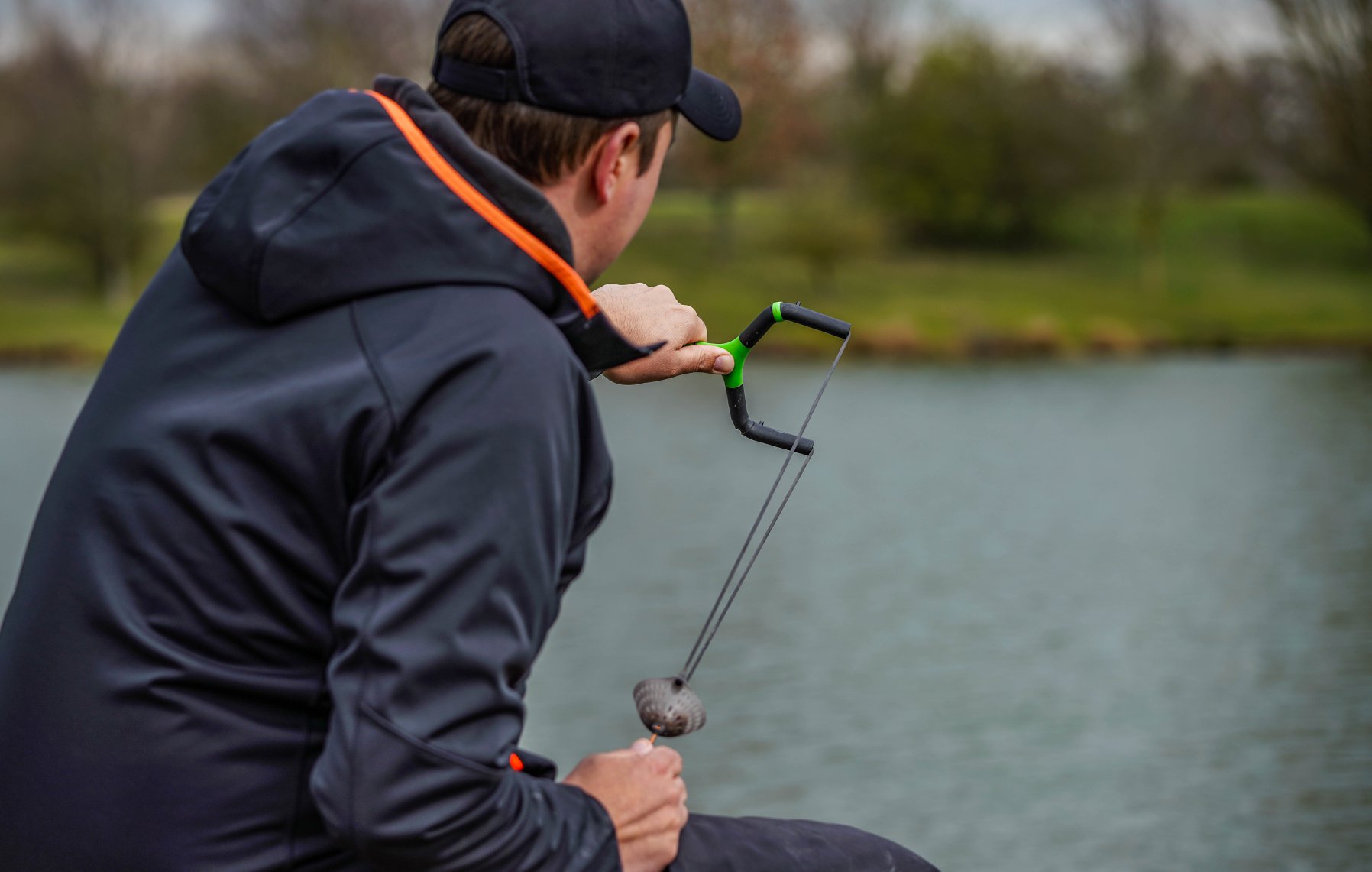
Coarse fishing landing net
A shallow rubberised net is beneficial for many reasons. The shallow net bag makes it easier to unhook and deal with fish. While the rubberised mesh provides the ultimate fish safety and minimises any unwanted fin or scale damage.

Coarse fishing rigs
Below we have highlighted the 3 main rigs that we recommend for targeting commercial coarse fisheries for carp.
Loaded Pellet Waggler Setup
When fish are actively feeding or moving in the upper layers of the water or during the warmer weather, the loaded pellet waggler is the go-to setup. Designed to fish with pellets, this tactic is deadly during the summer months.
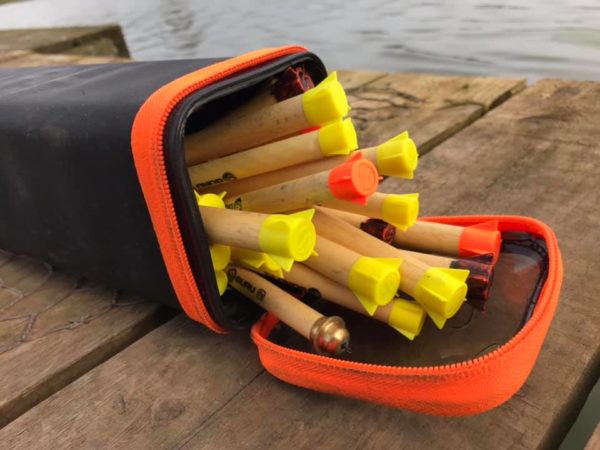
Loaded pellet waggler rig components
- 10′ float rod
- 2500 size reel
- Loaded pellet waggler
- Float stops
- 12-15″ bait band hair rig – size 14 – 16
- 6mm pellets
- Guru waggler adapter
How to tie a loaded pellet waggler rig
1. Slide a float stop onto your mainline, followed by a waggler adapter.
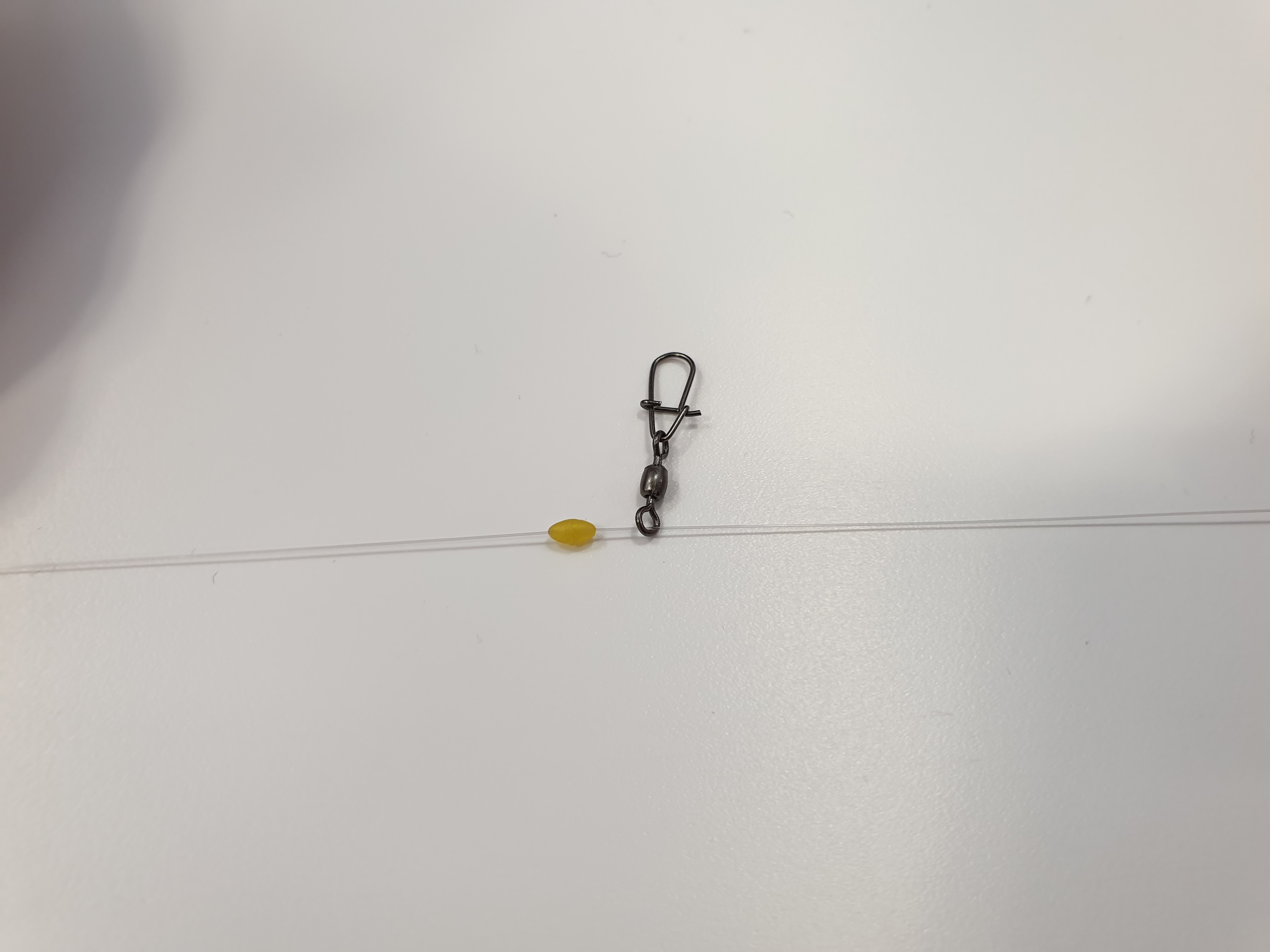
2. Then thread another two float stops on behind the adapter, the second float stop will stop your float pushing down your mainline with the force of the cast.
3. Connect the float to the waggler adapter.
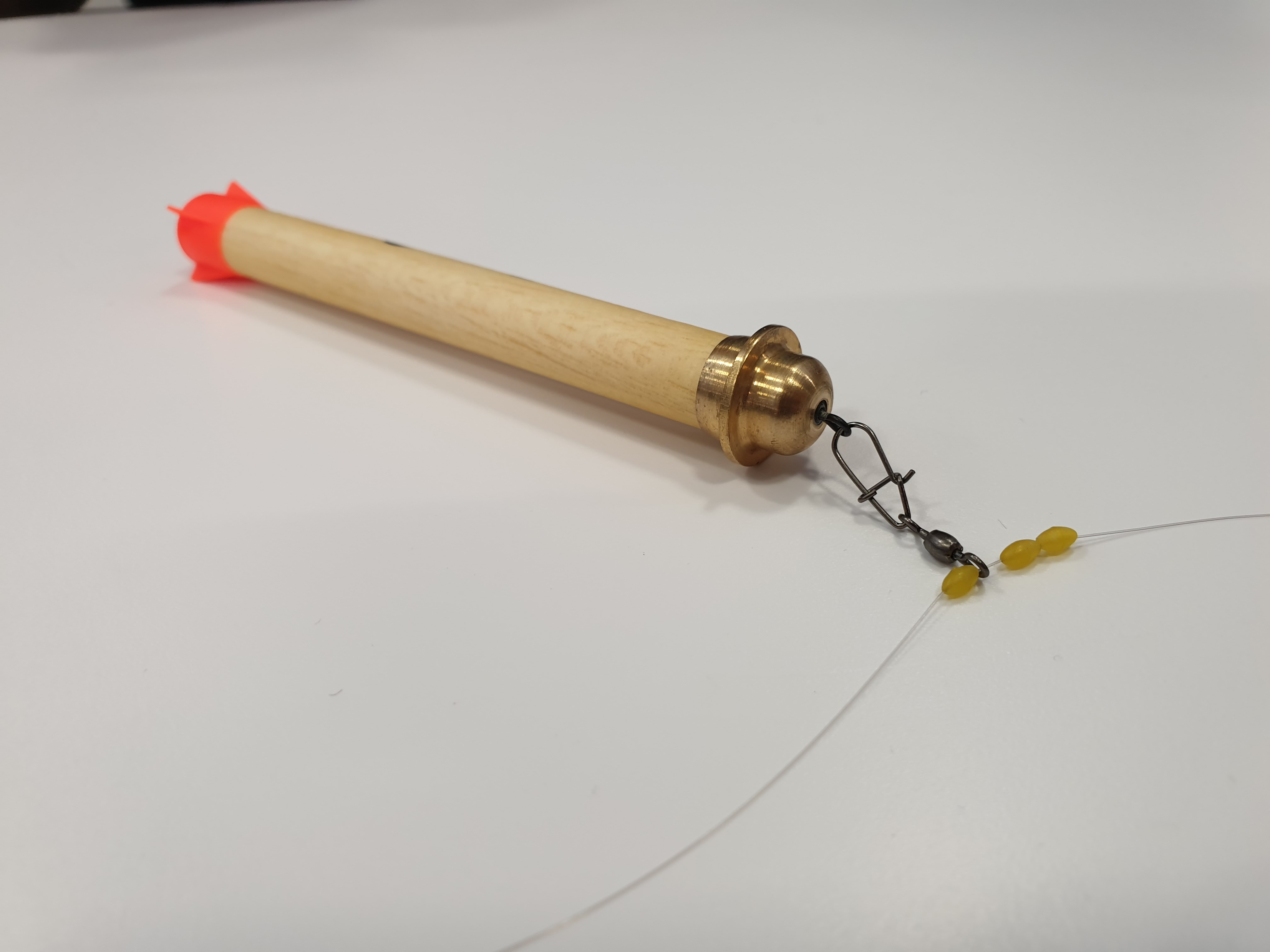
4. Then tie a loop at the end of your mainline.
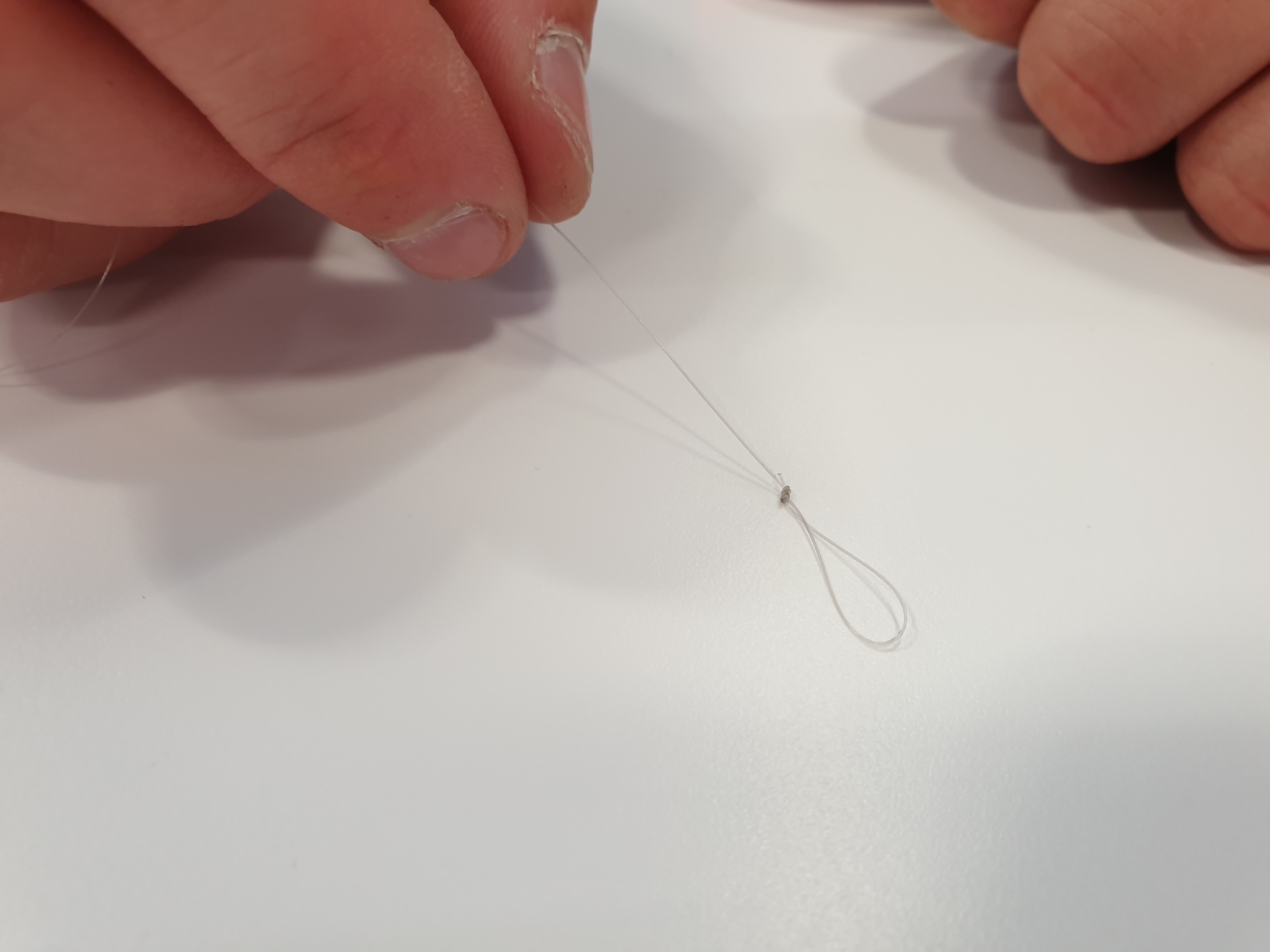
5. Then take your 12-15″ bait band hair rig in size 14 -16 and connect it to your mainline with a loop to loop connection.
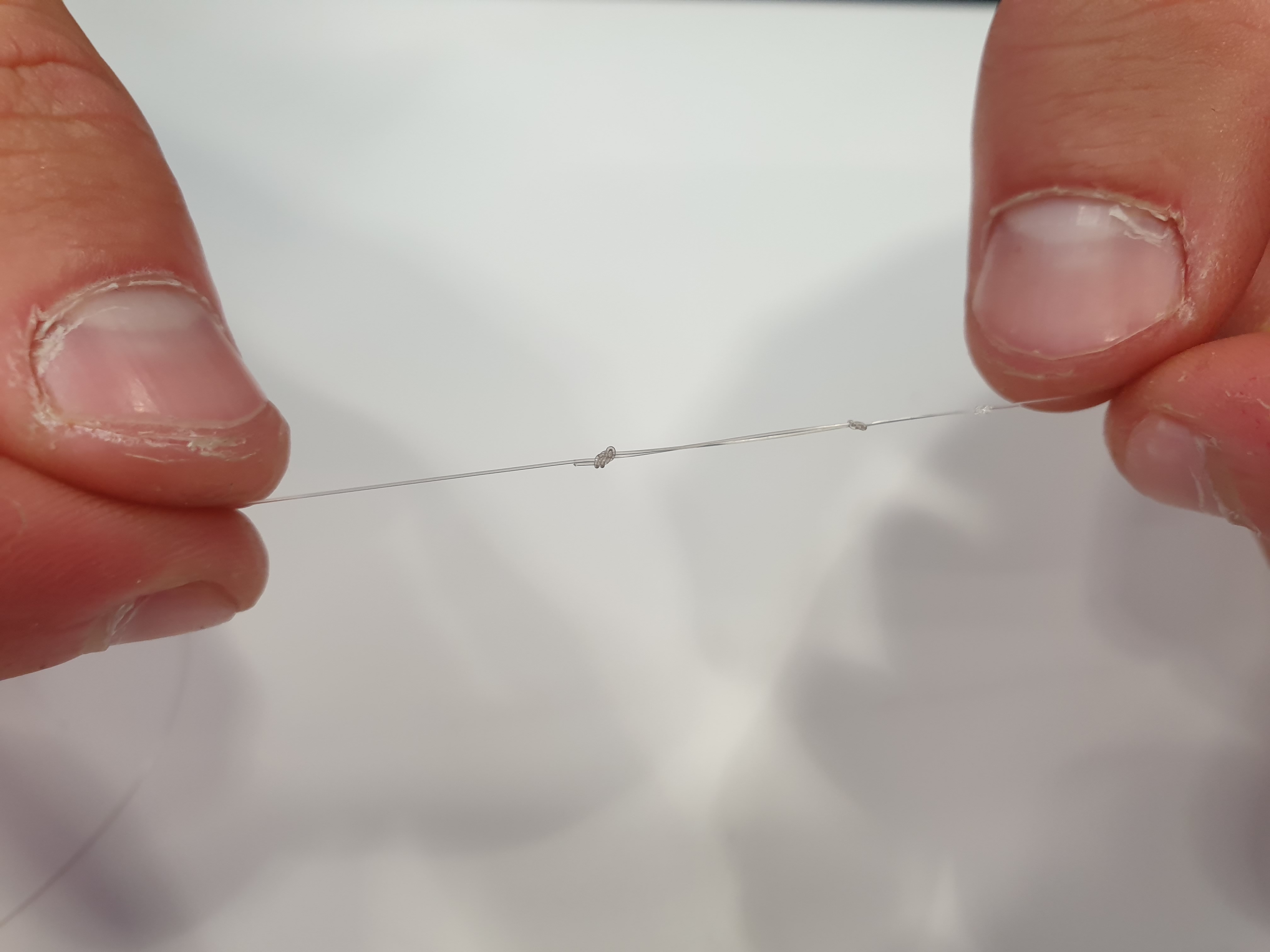
6. Attach pellet to your bait band.
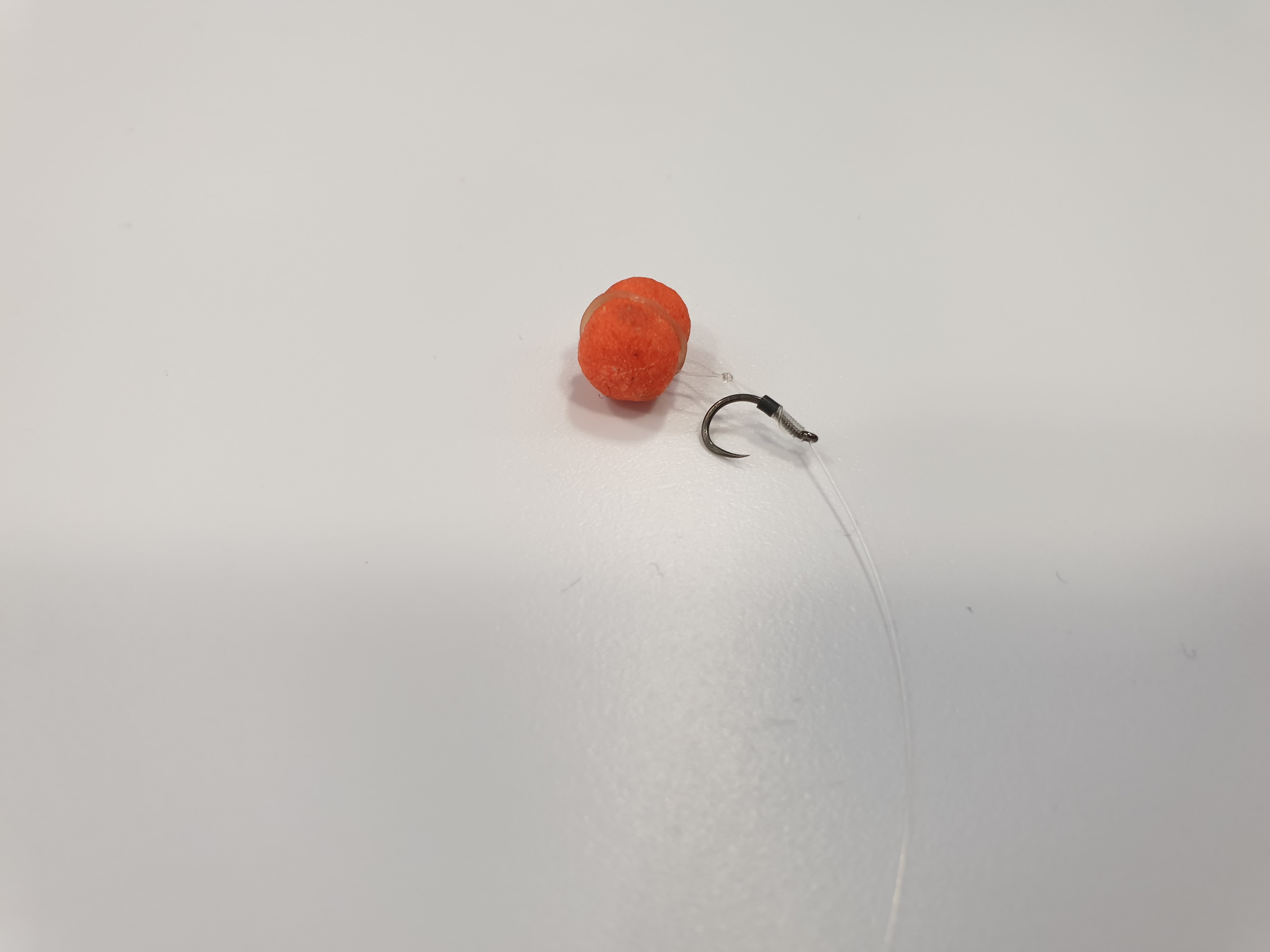
7. Start with your float 18 inches away from your hookbait.
How to fish a loaded pellet waggler
Start by feeding 3-4 pellets into the swim every 15 seconds. Use a catapult to help aid accuracy and distance.
Wait until you start to see fish feed confidently in the swim you are baiting.
Once fish are starting to show in the swim, catapult another 3-4 pellets over the top of the baited area and then quickly cast over the top of the showing fish to cover them. Feather the line for better control and management of the line. Ensure you stop the rig before it lands, this will allow the rig to straighten out on impact, minimising the possibilities of tangles.
We want to have the pellet waggler hit the water with a plop! This plopping sound attracts fish as it replicates the sound of loose feed entering the water.
If takes are slow but you can see fish actively feeding around your baited area. Try catapulting our 3 – 4 pellets two feet in front of your float, then quickly wind your float over the top of that area, quickly winding the float over this area, will lift your bait up through the water near the surface and will fall naturally over the catapulted bait we just put out. Cast regularly as takes normally come very quickly.
If fish are showing in your swim but you’re not catching, alter the depth of your float to try and stimulate bites.
The float is your visual bit indication, once the float goes under, that signifies a take. Strike immediately.
Method Feeder Rig Set up
The method feeder is a form of ledgering that allows you to bait an area with the use of groundbait or small pellets. By casting to the same spot with the method feeder, it allows you to build up a bed of bait. This bait not only attracts fish into the area but allows them to feed confidently as they start competing for the freebies that you’ve introduced to the swim.

Method Feeder rig components
- 10 – 11′ Feeder rod/Quiver tip – 2oz – 3oz
- 2500 size reel
- Guru X Safe method feeder
- Guru mould
- 4″ bait band rig – size 14-16
- Method feeder mix or 2mm pellet
- F1 dumbbells
How to tie a method feeder rig
1. Slide the tail rubber of the feeder onto your mainline.
2. Then tie a loop at the end of your mainline and hook it over the clip on the end of the feeder.
3. Slide the tail rubber over the top of the loop, ensuring it slides over the top of the feeder. This protects the knot and ensures the loop knot cannot slip.

4. Take your 4 inch bait band rig and loop to loop the hooklength onto the ring that is attached at the bottom of the feeder.
5. Then attach the pellet or dumbbell to the bait band.
How to fish a Method Feeder
Use a silicone method feeder mould to insert your groundbait or softened pellets, fill it up level and place the flatbed feeder into the mould and compress it hard into the feeder, then remove the feeder from the mould and then refill the mould half way and drop the hook bait into the silicone mould on top of the bait and gently compress the feeder. This will hide your hookbait within the feeder. Once cast, the lightly compressed feeder mix will disperse on impact with the water and expose your hookbait which will be sitting directly on top of your groundbait.
Cast to your desired swim/feature and try hit the same spot over and over again. So you bait a specific area efficiently.
Initially, cast every 2-3 minutes to prebait your desired swim and then slow the feeding down by casting every 5 minutes to continually feed the baited area.
The continual baited area will increase the carps confidence and they will feed more freely. The competition will be fierce and the takes will be very positive.
Hookbait wise, pellets work effectively, as does boilies and sweetcorn.
Once your bait is in the water, tighten down to your rig with the rod set at an angle and ensure the tip of the rod has a slight bend in it, this slight bend is required to show dropbacks (when fish pick up the bait and move towards you) the tip of the rod will straighten up during these takes. If the tip bends round further, this indicates a fish taking the bait and moving away from you. Strike and hold on!
Bomb and Pellet Rig setup
- 10 – 11′ Feeder rod/Quiver tip – 2oz – 3oz
- 2500 size reel
- Micro lead clip
- Anti-tangle sleeves
- 12-15″ bait band hair rig – size 14 – 16
How to tie a bomb and pellet rig
1. Thread the tail rubber onto your mainline, followed by the lead clip.
2. Now tie a swivel on your mainline.

3. Slide the lead clip down the mainline and slide it over the swivel until it clicks into place.
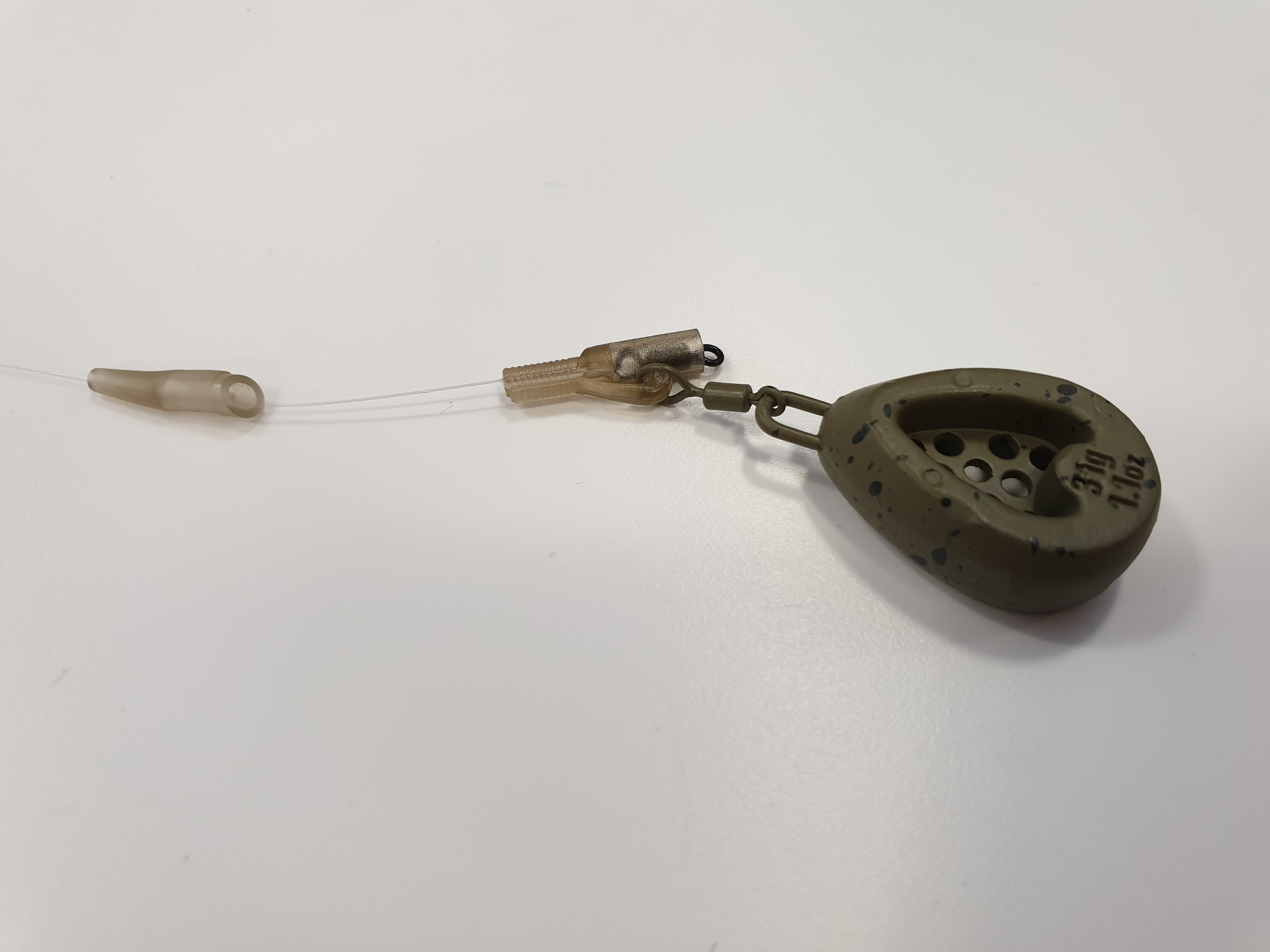
4. Then clip your lead onto the lead clip and moisten the lead clip, before sliding the tail rubber on the end of the line clip.

5. Now thread anti-tangle sleeve over the top of the 12-15″ bait band hair rig.
6. Then loop the hooklink to the swivel and slide the anti-tangle sleeve up over the other half of the swivel.
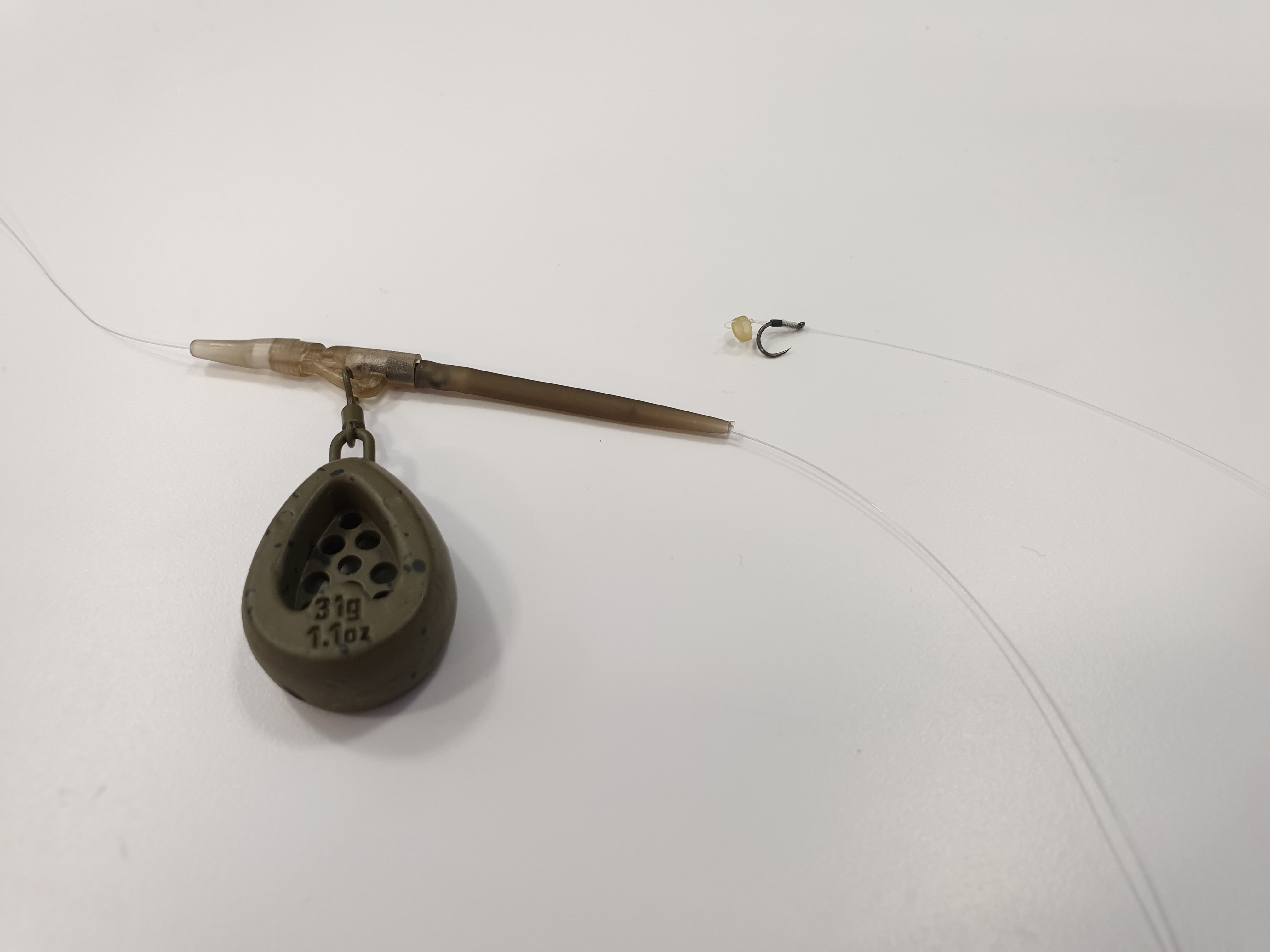
Top Tip
If the carp are very wary, try and fill a small PVA bag with 6mm pellets and nip the bag onto your hookbait. The free offerings presented around your hookbait might be enough to switch the carp on.
Top Tip
Try using F1 bandit dumbbells to add flavour and colour to your hookbait. The contrasting colour makes your hookbait stand out from the baited area.
How to fish a Bomb and Pellet Rig
Start off by feeding ten to twelve pellets every minute to your chosen area. Observe closely and look for active fish around your swim.
If fish are showing, keep feeding but monitor the number of free offerings you provide, you can measure how much bait you should be putting in by how active the fish are in the swim.
Recast your rig every 5 minutes to try and provoke a take.
You can use an F1 dumbbell hook bait as a bright visual attractor as an alternative hookbait.
Conclusion
Coarse fishing is a fun and exciting way to target new species. It’s fast-paced and requires a strategy-based approach. Commercial coarse fisheries offer great accessibility with car parking, fishing platforms and well-maintained surroundings that are designed to suit the anglers needs.
This style of fishing will appeal to anglers with families or have hectic work lives. As short sessions can prove very fruitful. So if you haven’t tried coarse fishing, you should really contemplate giving it a go!



